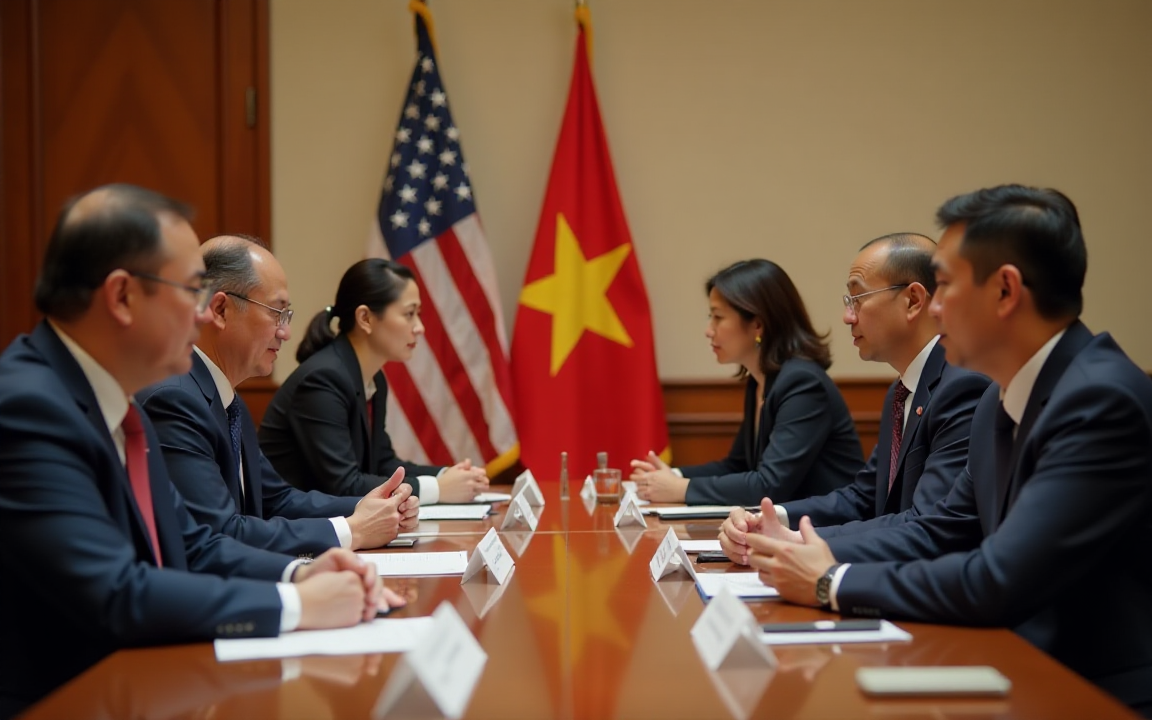On Wednesday, US President Donald Trump unveiled a new trade agreement with Vietnam, marking it as the first Asian nation to secure such a deal with the US.
This agreement stipulates a 20% tariff on imports from Vietnam, with a higher 40% tariff imposed on goods transhipped from third countries.
Although not as advantageous as the existing 10% tariff, this outcome remains preferable to the 46% reciprocal tariff Vietnam could have incurred once the 90-day tariff suspension concludes on July 9th.
“Therefore, it’s a bit of a mixed result,” Deepali Bhargava, regional head of research, Asia-Pacific at ING Group, said in a report.
Export tax hurts GDP
Distinguishing between value-added and transshipment exports will be crucial for evaluating the total impact on Vietnamese exports, according to ING. However, the precise definition of “transshipment” remains ambiguous.
Vietnam’s total exposure to US imports, from a value-add perspective, is estimated to be around 12% of its GDP. A 20% tariff, assuming a demand elasticity of 1, could potentially jeopardise 2.5% of Vietnam’s GDP.
Many companies leverage Vietnam as an assembly point for manufactured components imported from China. They also add sufficient value to products to legally alter their place of origin.
However, an illicit and hard-to-trace practice involves some companies simply affixing a “Made in Vietnam” label to goods produced in China.
Potential for further disruption exists, as studies show that “indirect Chinese content” in Vietnam’s exports to the US was estimated to be between 16% and 28% in 2021-22.
Though transshipment goods do not directly contribute to GDP, they stimulate economic activity and revenue. This occurs through various services like storage, handling, and transportation, thereby benefiting the service sector.
Bhargava said:
Therefore, the impact on GDP growth is expected to be more significant than the impact of tariffs on value-added goods.
Transshipment from China to affect Vietnam exports
From February 2025 to May 2025, trade data indicates a significant increase in imports from China and re-exports to the US, particularly in Vietnam and Thailand.
Vietnam’s imports from China surged by 24% year-over-year, reaching $174 billion, while its exports to the US were valued at $132 billion.
This trend of transshipment is evident in key sectors such as machinery and equipment, insulated wires and cables, and computer and electrical products.
China exported $77.2 billion worth of machinery and electrical equipment to Vietnam in 2024, making up 47.6% of China’s total exports to Vietnam.
Subsequently, Vietnam’s exports of similar products to the US reached approximately $45.3 billion, representing 40.9% of Vietnam’s total exports to the US.
It is challenging to directly measure the volume of transshipments, according to the ING report. However, the strong export growth coupled with the struggling local manufacturing sector implies a low level of domestic value addition.
Vietnam’s trade ministry has responded by issuing a directive to electronically centralize the issuance of certificates of origin. This measure aims to combat the illegal transshipment of goods to the United States and other trading partners.
Benefits from supply chain diversification
“While a reduction in transshipment flow might be negative for Vietnam in the short term, the persistent tariff differentials could further accentuate the supply chain shift trend that Vietnam has been benefiting from,” Bhargava said.
If tariff rates revert to reciprocal rates next week, Vietnam will be at the lower end of the range in Asia – below 24% for Malaysia and Japan, the other strong electronics exporters in the region.
Additionally, Vietnam stands to gain considerably in the low-value-added apparel and garments sector, particularly as Cambodian competitors face 49% tariffs.
Businesses are diversifying their supply chains, leading to a significant increase in foreign direct investment (FDI) into Vietnam.
This surge in FDI is primarily originating from countries other than China, with Singapore and South Korea being notable contributors.
Vietnam’s growing importance in electronics sector
Vietnam has become a key player in the electronics sector, particularly for exports to the US.
This growth is largely attributed to the “China+1” production model, where companies diversify their manufacturing locations beyond China.
Major US corporations, including Intel, Cargill, Boeing, and Apple, have recognized Vietnam’s strategic importance and have made substantial investments in the country.
This influx of investment has significantly boosted Vietnam’s export market share to the US in the electronics industry.
The post US-Vietnam trade pact a mixed bag for Hanoi, ING warns appeared first on Invezz


































